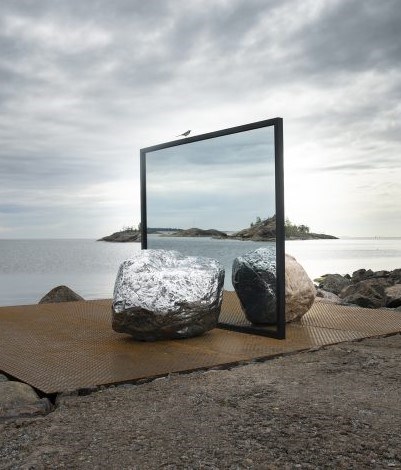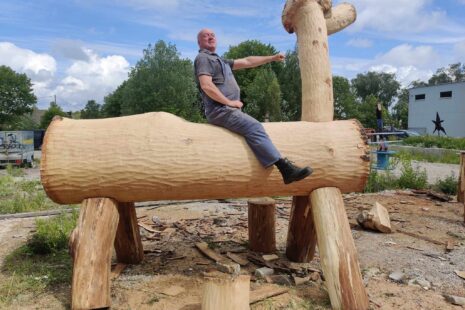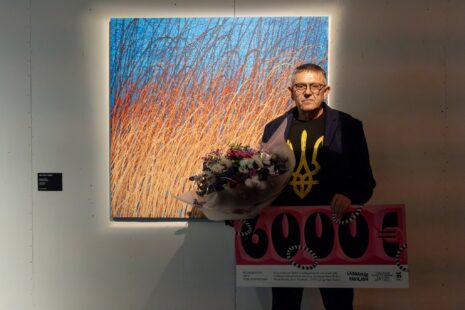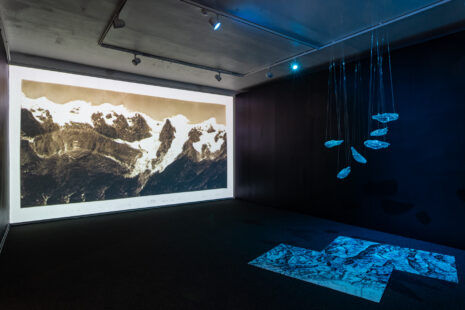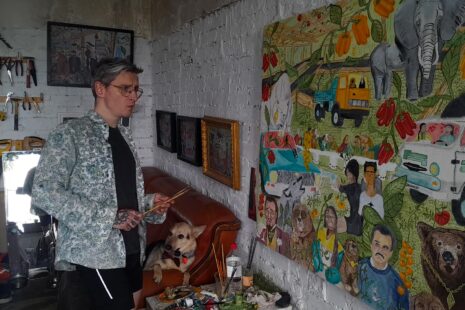The works of art on Vallisaari are placed along a marked trail both outdoors and inside historical buildings, gunpowder cellars, and empty residential buildings. One third of the works located on Vallisaari can be experienced outdoors. Some works are placed around Helsinki in locations such as HAM Helsinki Art Museum and the Helsinki Central Library Oodi. Art and events can also be experienced online.
Mayor of Helsinki Jan Vapaavuori says, “The Helsinki Biennial’s opening will be celebrated in a quite different atmosphere from what we originally planned. The biennial is a proof not only of Helsinki’s strength as an art and cultural city, but also of its determination and ambition, which guided the event’s organisation under extraordinary circumstances. It is essential for Helsinki not to stop after the COVID-19 crisis; we want to support the field of culture and art, its operators, and its ability to revive after the crisis. This is important not only for Helsinki, but also for its residents. The biennial will open to the public at a moment when art is more important than ever.”
Maija Tanninen-Mattila, the director of Helsinki Biennial and HAM, says, “We have developed the Helsinki Biennial together for years, and we are extremely happy that we can finally open it to the public. Thanks are due to the whole team, partners, and especially the biennial’s artists, who have worked tirelessly and with determination for this event. We welcome visitors to be inspired by art and nature and to recover from a challenging year.”
Art in dialogue with the island
The inaugural Helsinki Biennial’s head curators, Pirkko Siitari and Taru Tappola, have entitled the biennial The Same Sea, which reminds us that everything is interconnected and is therefore mutually dependent. This has become increasingly evident during the current ecological crisis and COVID-19 pandemic. The ecological crisis has metaphorically brought us onto the shores of the same sea, but its consequences vary from one part of the world to the next, and it affects people and various species in fundamentally different ways.
Together with a curator team, the head curators have invited 41 artists or artist groups to Vallisaari to create new site-specific artworks or to exhibit existing artworks that will engage in a dialogue with the island. Helsinki Biennial’s works deal with themes such as relationship to nature, boundaries and identities, time and change, and empathy and community.
Many of the sites on Vallisaari are incorporated as part of the artworks, transporting the viewer to different realities. Dafna Maimon turns a gunpowder cellar into a digestive system, and in Tuomas A. Laitinen’s work, a gunpowder cellar resembles an alien zone or a giant microscope. The Alexander Battery’s powder magazines, gun emplacements, vaulted cellars and spiral staircase form an inseparable part of Maaria Wirkkala’s installation. In his performance and video work, Samir Bhowmik guides participants into a journey into Vallisaari’s real and imagined infrastructures. Katharina Grosse turns Vallisaari’s old, run-down school building and its environment into a painting.
The global ecological crisis and Vallisaari’s unique nature have led many artists to explore the human–nature connection. Hanna Tuulikki explores the Finnish folkloric concept of being caught in metsänpeitto (forest cover) as a metaphor for losing one’s identity and the relationship with nature. The sound features a vocal improvisation based on traditional cow calling songs recorded on Hanna Tuulikki’s now derelict family farm. Outi Pieski and her daughters Birit and Katja Haarla’s video installation aims to re-establish humans’ broken connection with nature. Space, dance, music, and duodji – traditional Sámi handicrafts – form an entity in which separateness becomes unity.
Uwa Iduozee’s photography series depicts people who have left their native country and built a new life elsewhere. It is a tribute to those who, like Iduozee’s father, moved to Finland as adults, bringing their hopes and dreams with them.
Like an archaeologist, Inga Meldere digs up traces of life on Vallisaari from a period spanning from the 1950s to the 1970s when the island was closed to the public, and records the former residents’ childhood memories as referential paintings in abandoned rooms. Marja Kanervo’s film leads the audience into a dream-like journey into a spatial work realised in the Block A of the Pilot House. Gradually, she exposed layers of dwelling, highlighted the everyday items and traces she found, and explored light and its movement in the rooms.
Togetherness and empathy are at the core of many artists’ practices. Paweł Althamer produced two films in collaboration with Suomenlinna Open Prison. In the VR film, seven prisoners escape from their captive environment and find their way back to nature and to themselves. In the documentary about the making of the VR film, the prisoners talk about their lives, hopes, and freedom. The films’ two realities and methods of storytelling function as an exercise in empathy. Kuyngwoo Chun’s works are also created collectively. In Chun’s works, communication, listening, and being present with others – whether people or birds – are central.
Some works will be placed around mainland Helsinki. Joni Kärkkäinen and choreographer Jukka Tarvainen’s work at Töölönlahti Bay encourages viewers to interact with art through their own interpretation, being, discoveries, exploration, and movement. The idea for the work came from the divided Vallisaari: one part of the island is open to the public, and the other is not. Janet Echelman’s sculpture will rise high above the Senate Square, in the centre of Helsinki, for the month of August. It reminds us of people’s complex connections with the great cycles of time and the mechanisms of our physical world. The sculpture will include a changing colour scheme and soundscape that will come to life on 19 August, the opening day of Helsinki Festival. The 19 August event has been produced in cooperation with Helsinki Festival.
The main exhibition on Vallisaari will be accompanied by live works of art as well as a number of performances, workshops, discussions, and other events. The events can be experienced on Vallisaari, in mainland Helsinki, and online.
Read more about the programme here.

